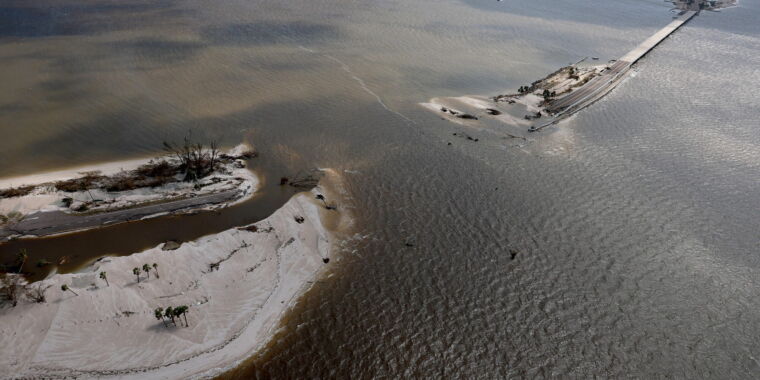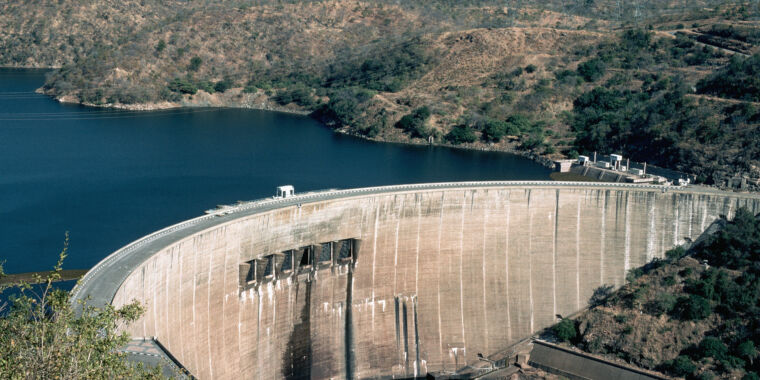
Joe Raedle/Getty Images
NOAA forecasters are upping their expectations for the 2023 hurricane season, based on record-warm Atlantic sea surface temperatures.
The National Oceanic and Atmospheric Administration announced Thursday that forecasters have increased the likelihood of an above-normal season to 60 percent. The forecasters now expect 14 to 21 named storms, including six to 11 hurricanes and two to five major hurricanes of category 3, 4, or 5 strength, packing sustained winds of 111 miles an hour or more.
In May, the forecasters at NOAA’s Climate Prediction Center had projected a 30 percent chance of an above-normal season and thought a near-normal season was more likely, with 12 to 17 named storms. They said Thursday the revised forecast, issued routinely in August near the heart of the season, was based on Atlantic sea surface temperatures that have not been seen since record-keeping began in 1950, said Matthew Rosencrans, lead hurricane season forecaster at the Climate Prediction Center, a division of the National Weather Service.
“I think people should worry about and prepare for the storms that this forecast implies,” he said.
The forecast comes as the recovery continues for many in Florida from an unprecedented season last year that included the one-two punch of hurricanes Ian and Nicole. After flattening swaths of southwest Florida in September, Ian left widespread flooding across the state’s interior, causing $113 billion in damage and 156 deaths. The hurricane ranks as the third-costliest hurricane in US history after Katrina in 2005 and Harvey in 2017, according to NOAA. Nicole, a rare November hurricane, inundated areas of Florida that Ian had spared.
Researchers at Stony Brook University in New York and the Lawrence Berkeley National Laboratory in California concluded that climate change increased Ian’s rainfall rates by more than 10 percent. Some areas were hammered by more than 20 inches of rain. Hurricane Fiona, another September storm, caused devastating flooding in Puerto Rico.
This year forecasters entered the season with more uncertainty than normal because of an unusual confluence of factors. Warmer Atlantic sea surface temperatures tend to enhance hurricane activity, but a developing El Niño was expected to temper that activity. An El Niño is a naturally occurring climate phenomenon that begins with warm water in the Pacific Ocean and affects weather patterns worldwide. Shifts in air currents can lead to milder, wetter winters in the US and droughts in Australia and India. The Pacific gets more hurricanes, and the Atlantic gets fewer.
Rosencrans said Thursday that many of the forecasts in May did not anticipate the continuation of the unprecedented Atlantic sea surface temperatures. He also said the changes associated with the El Niño appeared to be emerging later than expected and that some models do not show the impacts developing until September.
“It’s just that the impacts of the El Niño have been slower to emerge over the Atlantic,” he said. “It’s not instantaneous. It sort of spreads out.”
NOAA also said a below-normal wind shear forecast, slightly below-normal Atlantic trade winds, and a near- or above-normal West African Monsoon were key factors in the revised forecast.
The season has already been an active one, with five storms that have reached at least tropical storm strength, including one hurricane. The average season features 14 named storms, including seven hurricanes and three major hurricanes. The season begins June 1 and ends November 30.
Amy Green covers the environment and climate change from Orlando, Florida. She is a mid-career journalist and author whose extensive reporting on the Everglades is featured in the book MOVING WATER, published by Johns Hopkins University Press, and podcast DRAINED, available wherever you get your podcasts. Amy’s work has been recognized with many awards, including a prestigious Edward R. Murrow Award and Public Media Journalists Association award.
This story originally appeared on Inside Climate News.








